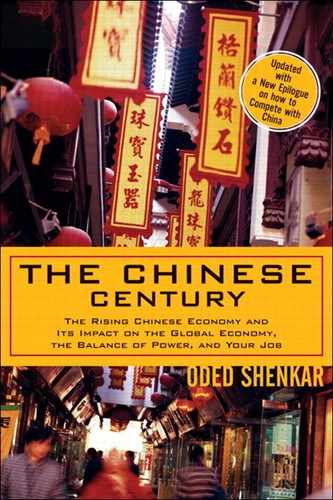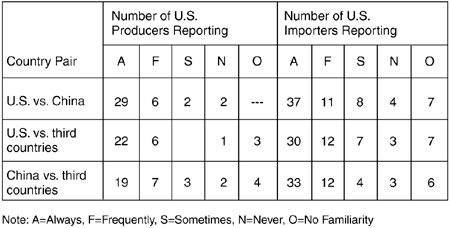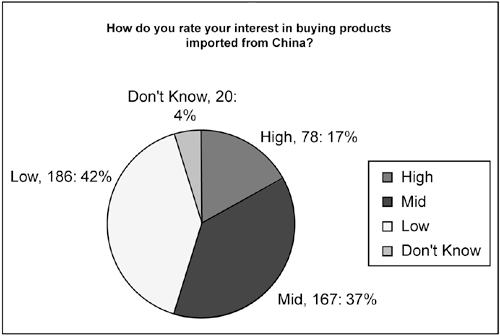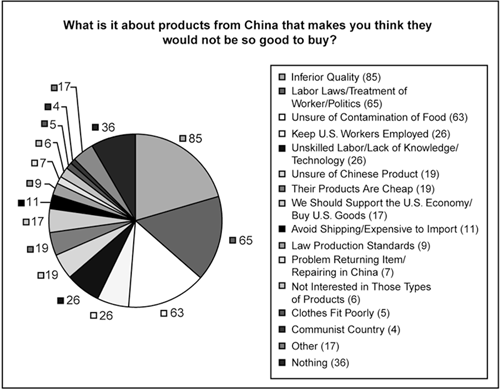To the consumer, China's entry into global markets seems at first sight to be tracking the road traveled by Japan and later by South Korea, Taiwan, and Hong Kong. Both Japan and the tigers (South Korea, Taiwan, Hong Kong, and Singapore) initially flooded global markets with low-quality, cheap products, priced well below those of domestic producers and other foreign competitors. With quality and reliability improving, prices were kept in check or rose modestly, forming a value proposition that global customers could not ignore. The range of exports then gradually expanded to cover broader product categories, mostly by way of moving up market (for example, from a simple transistor radio to a stereo radio-tape). The more generous margins in the upper segments allowed better return while preserving price advantage over established competitors. In the process, the low end was relinquished to lower-cost newcomers.
China's path shows many of the same features, but also some remarkable differences. While Japan and Korea gradually exited the cheap-good segments in favor of capturing the higher margins available from higher-end products, China has begun moving into the high end without deserting the low-end. Chinese furniture, for example, now covers the entire range—from the “low” to the “better” to the “best” segments of the U.S. household furniture market. The same is true for color television sets, where Chinese makers continue to dominate the conventional receiver segment while extending their product range upward and often leapfrogging into advanced (and higher-margin) plasma sets. The breadth of offering is especially attractive to the large-scale U.S. importers and retailers who are looking for a one-stop shop for diverse and changing procurement needs.
In addition to offering a broader scope of products at an early stage, China has been quicker than its predecessors to penetrate global markets. It did so first by leveraging a much larger foreign-investment tide and relying on the exports of multinationals with advanced technology, established brand names, existing distribution channels, and intimate knowledge of global markets. By observing and supplying the multinational players, Chinese producers developed strong Original Equipment Manufacturer (OEM) capabilities and circumvented the costly need to build brand identity, distribution, and service networks instead selling under somebody else's label—whether that of an established manufacturer, a retailer's private label, or the producer's own untested brand. The Chinese onslaught occurs at a time when the U.S. retail sector has come to be dominated by giant retail discounters, with China both a beneficiary and a cause of this transformation. According to the International Trade Commission (ITC), the top five retailers now account for 65–70 percent of the U.S. market for conventional color televisions receivers—up from about 40 percent ten years ago. Discounters (such as Wal-Mart, Target, Best Buy, and Circuit City) compete on price and are willing to make their shelves available to relatively unknown brands. They primarily seek low cost but also require reliability, short lead time, and vast production capacity—a combination that inevitably leads to China. Similar trends can be observed in Japan, where discounters such as the 100-yen stores have been among the most enthusiastic importers of Chinese merchandise (Europe—whose retail market remains fairly fragmented—is somewhat behind, though this is changing as well). However, while the Japanese have a favorable attitude toward their domestic products regardless of product superiority, Americans evaluate a domestic product more favorably only when it has superior qualities.[1] Thus, the American market and the China production machine seem like a match made in heaven.
Related to the rise of large retailers, and critical to the penetration of Chinese products into global markets, is the decline of the brand. With staple consumer products such as TV sets and DVD players turning into commodities, the appeal of any but the strongest and most exclusive brands has considerably eroded. America's Research Group found that, between 2000 and 2003, the percentage of shoppers who said that brands were extremely important in their purchase decision declined from 48 to 32 percent.[2] Chinese manufacturers have been prime beneficiaries of this changing sentiment. That the rise of giant retailers and the decline in brand consciousness have been more pronounced in the U.S. than in Europe partially explains why the U.S. has thus far borne the brunt of Chinese imports.
The U.S. consumer has shown an insatiable appetite for Chinese products—from bicycles, coats, and Christmas ornaments to TV sets and DVD players. In 1992, China had less than 10 percent of the U.S. electronics market. By the end of the decade, that had more than doubled. TCL is set to become the world's largest TV maker with Changhong, Konka, and others following. As China expands and upgrades its product lines, its relentless march into foreign markets picks up pace. Potential resistance, if it comes, will probably be rooted in the political and social ramifications of China's rise rather than in the change in economic fundamentals. Despite sporadic efforts by U.S. unions and a number of grass root groups (such as Mad in the USA), a clear link between the consumer and the employee role is yet to be established. If such a link were to be established, a backlash not unlike that associated with the Japanese exports of the 1980s could follow with far reaching consequences for all players.
The preponderance of Chinese products, from clothing and furniture to electronics and appliances, on the world's retail shelves illustrates how fast Chinese imports are capturing market share from domestic products as well as from third-country producers. The trend has been especially pronounced in the U.S., where China's share of U.S. imports has been growing steadily (see Exhibit 8-1). There is no indication that this export drive is going to stop any time soon; on the contrary, all indications are that it will continue to grow at a brisk pace and—in some instances—reach what trade regulations refer to as “surges.”

Source: Direction of Trade Statistics, International Financial Statistics, International Monetary Fund, 2003.
Figure 8-1. U.S. Imports from China as a Percent of Total Imports.
Chinese makers of wooden bedroom furniture were in an ideal position to take advantage of the U.S. retail opportunities. According to the ITC, 97.3 percent of Chinese household furniture imports in the U.S. went directly to retailers (versus 90 percent for domestic makers), mostly under private store labels—something U.S. producers, apparently, were not ready to do. Importers noted that reliability, consistent quality, short lead time, timely delivery, production capacity, product range, and customization capabilities provided an edge to Chinese products beyond a mere price advantage. It is especially interesting that customization, once a barrier to importers, has become a competitive advantage of Chinese products. Both state-of-the-art machinery and skilled craftsmanship are noted in different parts of the ITC report as providing Chinese makers with a competitive advantage, but it is the combination of the two that confers the real advantage over competitors who typically have one but not the other. Domestic-producer advantages in lower shipping costs and order lead time were not as obvious. For instance, the ITC figures show an average order lead time of 29.5 days for domestic manufacturers versus 80 days for Chinese imports, but importers supplying from U.S. inventory had an average lead time of only 15 days.
In the TV market, Chinese manufacturers have moved quickly from an also-ran to a dominant player, capturing market share not only from domestic producers (ironically, only one of the seven “domestic” U.S. producers listed in the ITC investigation, Tennessee-based Five Rivers, is not foreign owned, and Five Rivers itself assembles sets for Korean maker Samsung and Dutch maker Phillips), but also from third-country competitors. For instance, Commerce Department figures show that while the value of Malaysian-made TV sets sold in the U.S. has almost doubled between 1998 and 2002 (from $1.04 billion to $1.97 billion), Chinese imports rose six-fold (from $685.27 million to $ 4.28 billion) during the same period.
The TV industry was an ideal point of entry for Chinese manufacturers. The basic technology was widely available, and several developed-country television-makers (such as GE and Motorola) had exited the low-margin business years earlier. Chinese companies, such as Sichuan-based Changhong Electric, have cut their teeth battling with the likes of Matsushita and Toshiba in their domestic market and then turned their attention to global markets. In addition to a lower cost structure, rapid growth in their domestic market helped Chinese producers obtain scale advantages, and hence lower unit costs, that other producers found impossible to match. At the request of domestic U.S. manufacturers, the ITC has recently looked at import of color TV sets from both China and Malaysia. In June 2003, the ITC determined that there was a reasonable indication of material injury to the U.S. industry from the import of certain color TV receivers.
A key reason behind the remarkably fast penetration of Chinese products into the U.S. market is a retail landscape increasingly dominated by large retailers. These retailers are more price sensitive, require massive production capacity and short lead time to accommodate changing tastes or massive promotions, and possess the global supply chains that facilitate import logistics. They also have the market presence and scale necessary to sell an untested brand either under their own private label or under that of a neophyte manufacturer. Take Wal- Mart, the world's largest retailer (and largest company), which accounts for more than 10 percent of U.S. imports from China. It has been estimated that Wal-Mart bought upwards of $12 billion worth of Chinese goods in 2002, making it not only the largest buyer of Chinese goods in America but a bigger importer of made-in-China products than Canada, the UK, or France (see Exhibit 8-2). Unofficial figures for 2003 put Wal-Mart's China purchases at $15 billion.
Wal-Mart's purchases from China received much attention not only because of the size of the retailer and the magnitude of its imports, but also because they came on the hills of its 1980s “Bring It Home to the USA” campaign which was derailed when the media challenged the country of origin of some its merchandise, as well as the conditions under which it was produced. The retailer subsequently adopted the position that it “buys American whenever it can,” but it would be years before the company would specify what this meant—that if a U.S.-made product would fall within 5 percent of the price and quality of an imported competitor, Wal-Mart would take smaller markup and go with the American product. By the 1990s, however, foreign imports and (in particular) Chinese products came in at a much larger margin and Wal-Mart was on its way toward becoming China's number one import retailer. The company has a major purchasing operation in Shenzhen (a post-reform city adjacent to Hong Kong) whose representatives are scurrying the country for buying opportunities.
China fits very well with Wal-Mart strategy of “everyday low prices” coupled with huge promotions, which bring masses of shoppers into its stores for one-time events. According to the ITC, everyday sales account for most of Wal-Mart's TV sales but only a small percentage of its imports. Wal-Mart typically orders huge numbers of imported TVs for special promotions and told the ITC that, immaterial of price, no domestic producer could have met the huge scale of products it needed for such sale events. For its Thanksgiving 2002 “blitz,” Wal-Mart contracted with Sichuan-based Changhong Electric to supply thousands of TV sets sold under the Apex Digital brand.
The increasing share of large retailers like Wal-Mart, and the increasingly prominent role China plays in their plans, suggests continuous pressure on manufacturers throughout the world and a growing presence of Chinese goods on retail shelves. With Chinese dominance of apparel, toys, and consumer electronics markets, fewer and fewer non-Chinese firms will be able to provide the scale, product scope, lead time, and price that the large retailers seek. The Chinese, on their side, need the large retailers to take their growing production capacity—at least until they are able to develop their own distribution and establish their brands. Thus, the fates of Wal-Mart and the Chinese industry will remain closely intertwined for years to come.
One of the major arguments of importers and proponents of Chinese products is that they do not compete head-on with American-made products since they are typically found in the lower end of the product scale. A recent investigation by the ITC is informative: As part of a comprehensive assessment of Chinese competition in the household wooden furniture industry, the ITC examined what Chinese products were in competition with domestic and other foreign imports. The results presented in Exhibit 8-3 suggest competition across the board, with a majority of both domestic producers and importers of the opinion that Chinese products are always or frequently interchangeable with domestic as well as third-country products. Furthermore, the ITC believes that this is true for the furniture market as a whole.[3]
While Chinese products have made significant quality strides, they continue to rely on cost as a key competitive advantage. In the ITC investigation of the color TV market, Wal-Mart and Sears suggested that it was natural for the Chinese and Malaysian imports to be priced lower since they are not sold under established brands that signal quality. This was disputed by the domestic producers who argued that the product has become a commodity and that brands have become almost meaningless, with Sony the only manufacturer able to command a price premium. The domestic makers also noted that the Chinese and Malaysian imports now penetrated all segments of the TV market and did not remain confined to cheaper, entry-level models. The ITC agreed with that view, noting that many of the imports had features associated with higher-end models.
According to the ITC figures, Chinese and Malaysian sets undersold their domestic competitors in all thirty-eight possible price comparisons, with margins ranging from 1.6 to 50.3 percent. While price erosion has been a fixture of the industry over the last decade, the ITC calculated that where Chinese and Malaysian sets competed directly with domestic TVs, the erosion has been faster than the 4.3 percent average decline in the consumer price index for televisions between 1995 and 2001; the Commission thus concluded that these imports have had “a significant price depressing effect.” The ITC investigation of wooden bedroom furniture shows a similar trend, with Chinese imports priced less than similar domestic products in 107 out of 108 price comparisons. The margin of difference ranged from 4.9 to 77.2 percent. Exhibit 8-4 shows, however, that while price remains the key factor supporting Chinese imports, it is by no means the only one.
Chinese products would not be on so many retail shelves if potential customers were not willing to buy them. Leo J. Shapiro and Associates, a Chicago-based survey research firm, studied the attitudes of Americans towards China and Chinese products in May of 2002. A nationally projected sample of 450 U.S. households were surveyed about their interest in buying Chinese products. As Exhibit 8-5 shows, the interest is moderate, with more than half of respondents showing a high- to mid-level interest but more than 40 percent not showing an interest. These proportions will probably change as Chinese products become more known and uncertainty regarding quality diminishes, though other factors (such as animosity) may dampen a growing enthusiasm.
That interest is high in electronics and computers and not only in arts and clothing (see Exhibit 8-6) suggests that China is beginning to acquire a reputation for providing reasonable quality in technology products. Indeed, when people are asked why they are interested in Chinese products, cheap price still comes first but is immediately followed by positive perceptions regarding product quality and technological experience as well as by positive experience with Chinese products (see Exhibit 8-7). This perception of Chinese products as providing good quality at a reasonable price is noteworthy because it is not far from the value proposition that many global customers attach to U.S.-made products. This suggests that, down the road, made-in-China goods will be in direct competition with American products in world markets.
Exhibit 8-8 lists reasons why people would not buy Chinese products. The exhibit suggests that poor quality remains a major concern, which is consistent with the Chinese Ministry of Commerce's observation that foreign quality standards in developed-country markets pose the biggest obstacle to increased Chinese exports. This is immediately followed, however, by nonproduct-related issues such as the perceived treatment of Chinese employees or concern for U.S. jobs—both of which also play an important role in the purchasing decision. This suggests that the decision to buy made-in-China products may become entangled in social and political considerations. Marketers know that animosity can play an important role in purchasing decisions.[4] It is quite possible that such animosity may develop toward China based on perceptions regarding anything from working conditions to geopolitical developments (say, aggression toward Taiwan). A Zogby International poll of likely voters released on September 30, 2003, shows China at the top of a list of non-allied countries, ahead of Saudi Arabia and France. An earlier poll (released June 13, 2003) found that more than 80 percent saw China as a serious threat to U.S. national security.
Further information on the image of Chinese products comes from a study by Gary Insch in Management International Review.[5] Insch quizzed purchasing managers and agents in the U.S. and Mexico regarding their perceptions on the quality and design of manufacturing in various countries. The findings (see Exhibit 8-9) show that in the Mexican sample, China ranks lowest of all countries surveyed on both design and manufacturing quality. In the U.S., however, China places ahead of Mexico and Brazil and is not far from the score for Malaysia, a country that has attracted considerable manufacturing foreign investment before China.
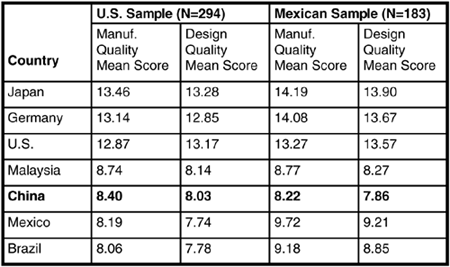
Source: Gary S. Insch. The impact of country-of-origin effects on industrial buyers' perceptions of product quality. Management International Review, 43. 3, 2003, 291-310.
Figure 8-9. Comparative Ratings for Perceived Manufacturing and Design Quality.
China has been a major beneficiary of (as well as a reason for) the decline of the brand in the retail market. According to the Financial Times, with the exception of super-luxury brands whose identity is intrinsically linked to European manufacturing, all others are either manufacturing in Asia or are thinking about it.[6] Asia, increasingly, means China. The Chinese themselves are nonetheless very brand conscious, a legacy of Confucian hierarchy and of their imperial past where rank was prominently displayed on bureaucrats' clothing. Chinese producers seek to escape the low-end segment of the market on its razor thin margins, ever-increasing price pressures by global buyers, and intense competition on the part of both foreign and domestic producers—including new entrants that appear in the market almost daily. One of the main escape routes involves brand building as a way to capture the higher margins of premium products. The Chinese government has also sought to support this trend with an endorsement by the Chairman of the National People's Congress and the establishment of a Chinese Brand Promotion section under the State Bureau of Quality and Technology. Building brands fits with the government's strategy of consolidating strategic industries in order to create national champions that can hold their own in global markets and is viewed as one more way for the country to restore its imperial glory.
Chinese companies such as Haier and Lenovo (formerly Legend) are already building brand names at home and abroad. Others have found a quicker and cheaper way, buying the trademarks of companies in distress (for example, TCL's acquisition of German electronic-appliance maker Schneider), taking over customers with whom they have done business as an OEM (for example, Techtronic's purchase of Cleveland-based Royal, manufacturer of the Dirt Devil and Royal brands), or via an alliance with a branded manufacturer (for example, TCL's majority ownership of a joint venture embedding Thomson's TV business with its RCA mark).
In his book, Buy American,[7] Dana Frank recalls the Buy American campaign of the 1970s and 1980s, from the hacking of a Toyota in Detroit to the racial overtones of the union campaign featuring an American flag made in Japan and the “Made by an American, worn by an American, paid for by an American” hat made in China. Frank notes that union-label and crafted-with-pride campaigns floundered not only because of increased blurring of product origin (such as an Ohio-made Honda) but mostly because “the whole logic of saving jobs by buying American was dependent upon the concept of a partnership between U.S. workers and corporate allies. But the corporate part of the team—like the auto and apparel industries—was itself fleeing overseas.” These lines could have been written today. With U.S. foreign investment higher than at any Japan-bashing time, major retailers relying on Chinese imports to maintain a price advantage, and major manufacturers dependent on Chinese outsourcing to stay in business, a coalition of multinationals and consumers to oppose made-in-China imports is even less likely. Says Tom Hopson, the CEO of domestic TV maker Five Rivers, who filed the complaint to the ITC: “I was surprised to see U.S. retailers at the hearings. They were acting like we were filing a suit against them.”[8] Similarly, furniture retailers, increasingly dependent on Chinese imports, threatened to exclude U.S. manufacturers who complained about Chinese imports from their showrooms. That those constituencies will so diverge is part of the China impact that is here to stay.
